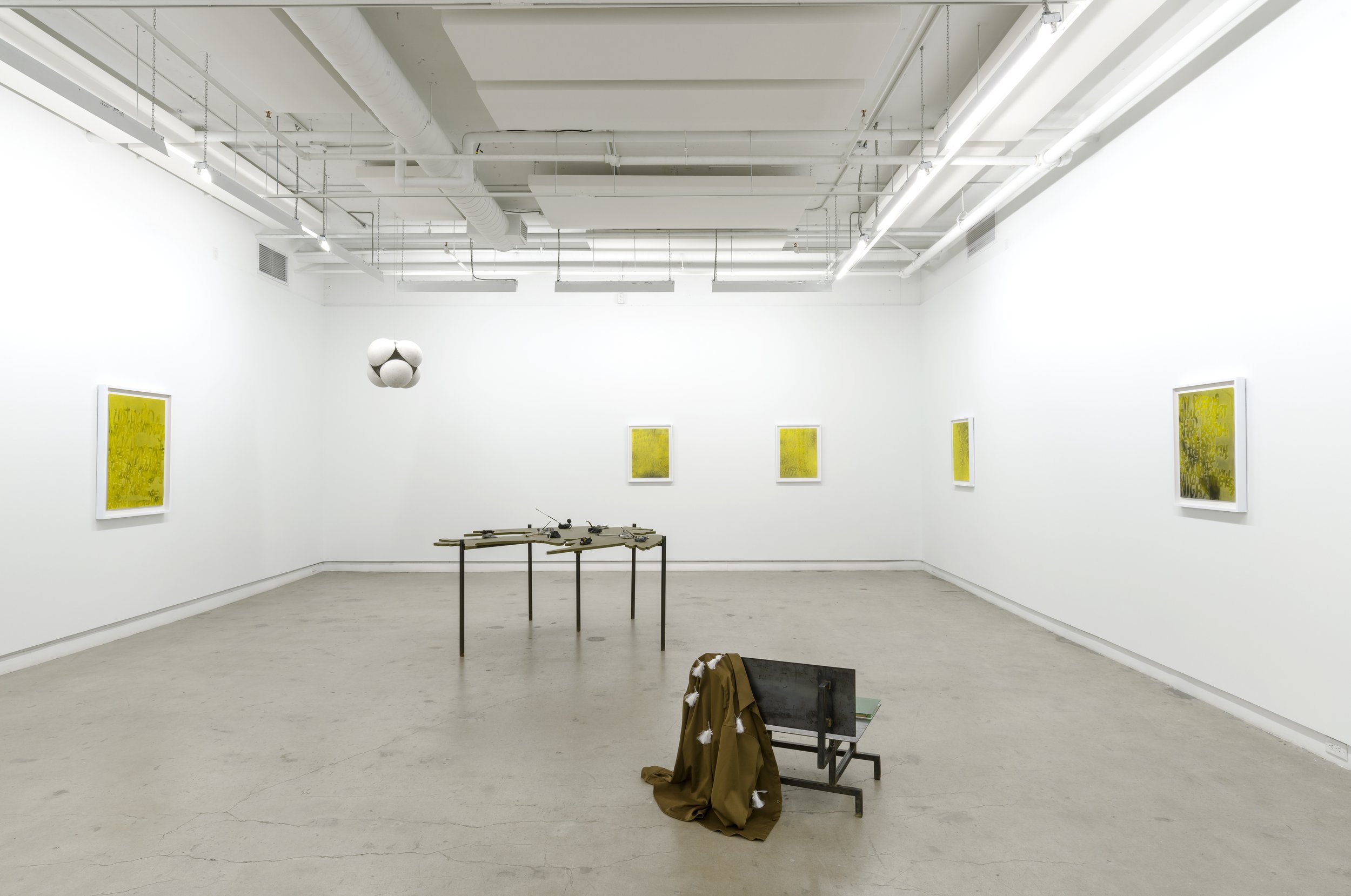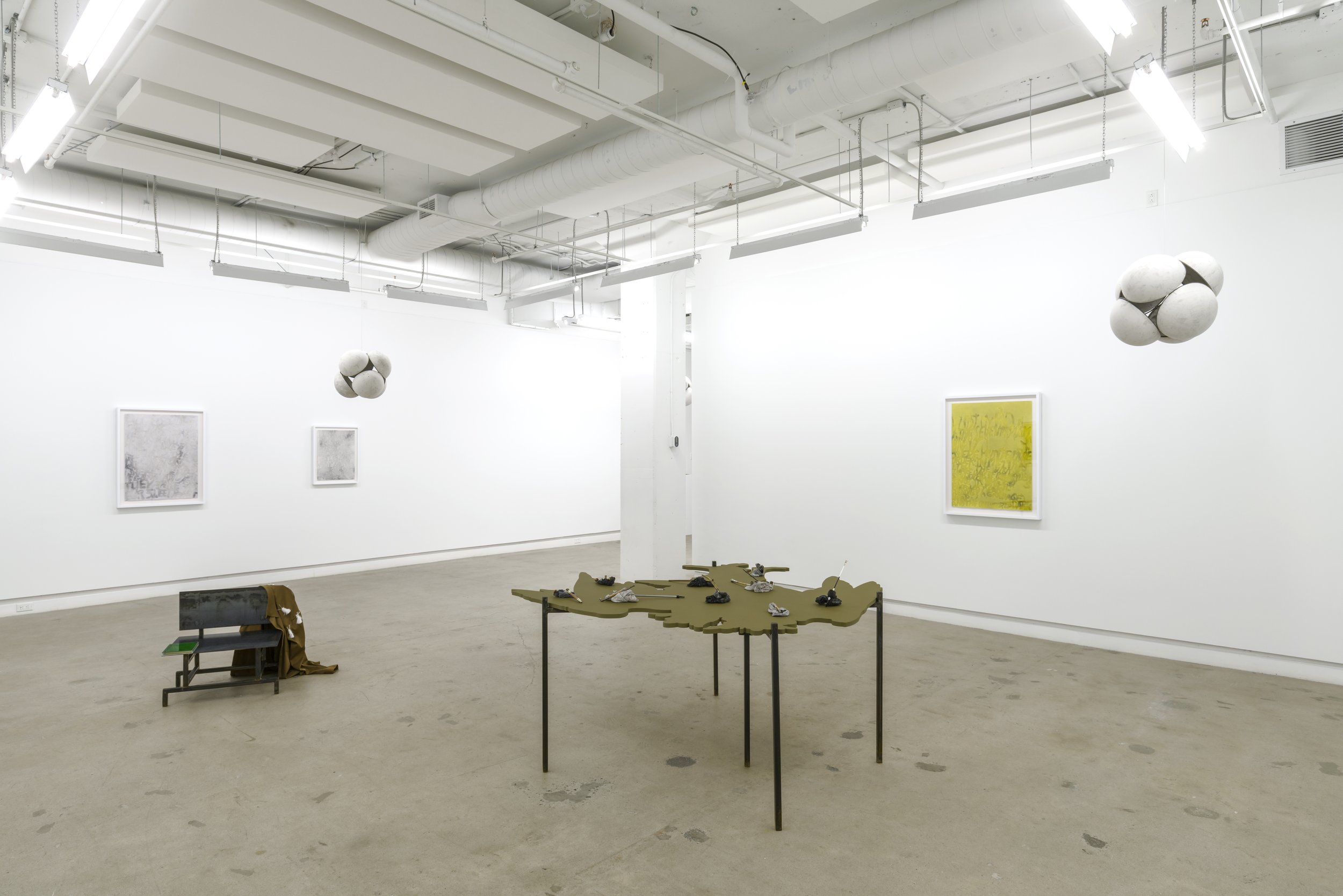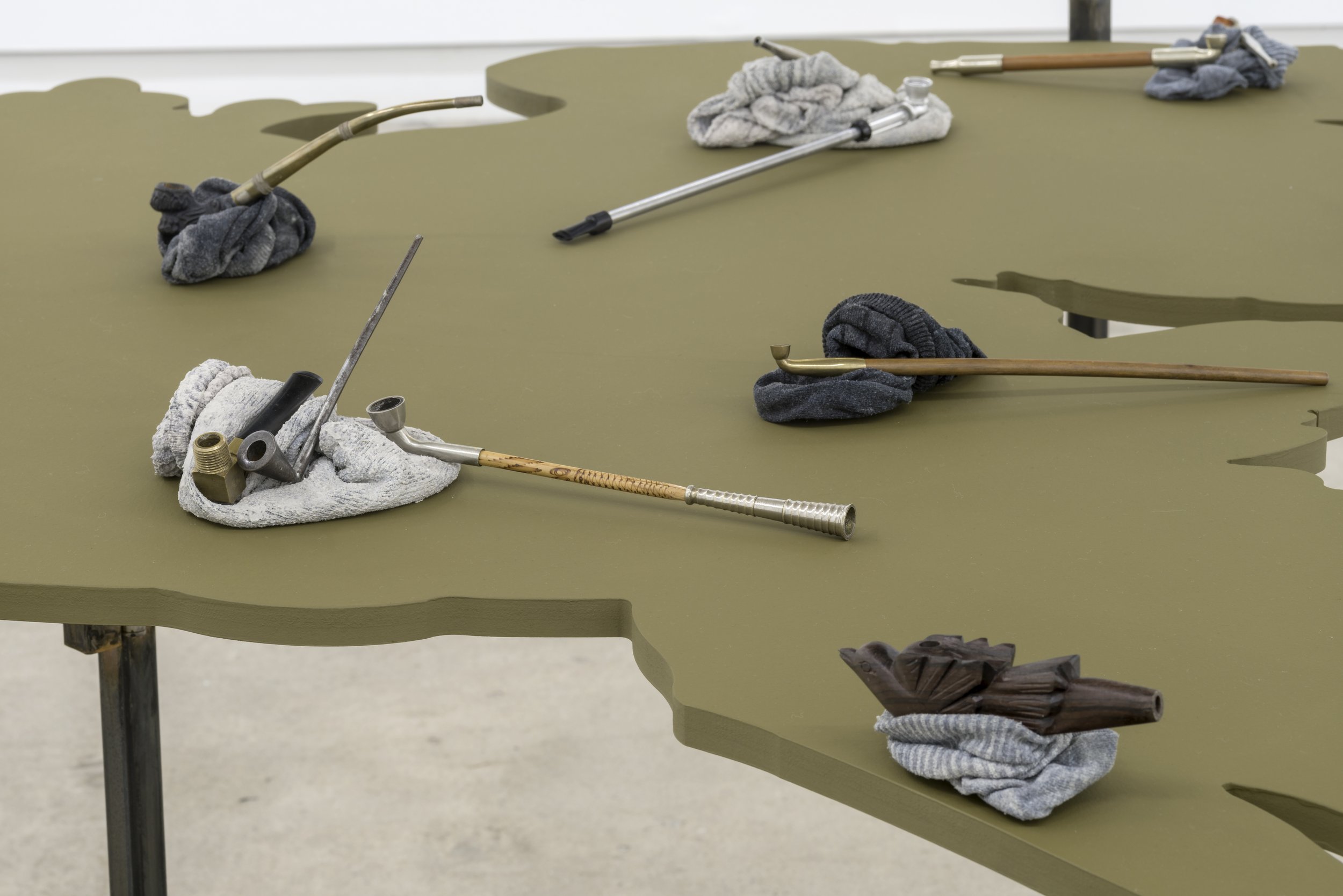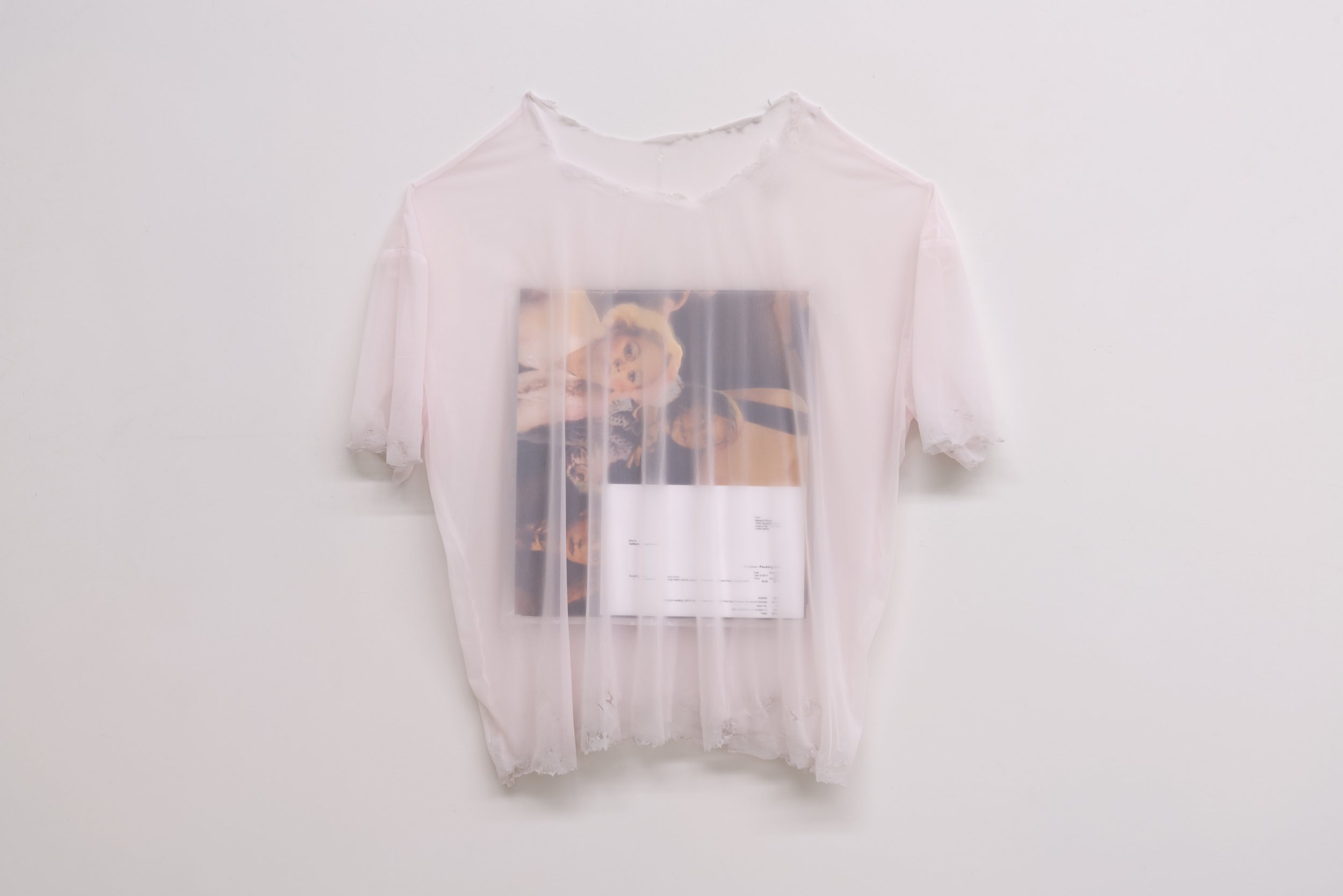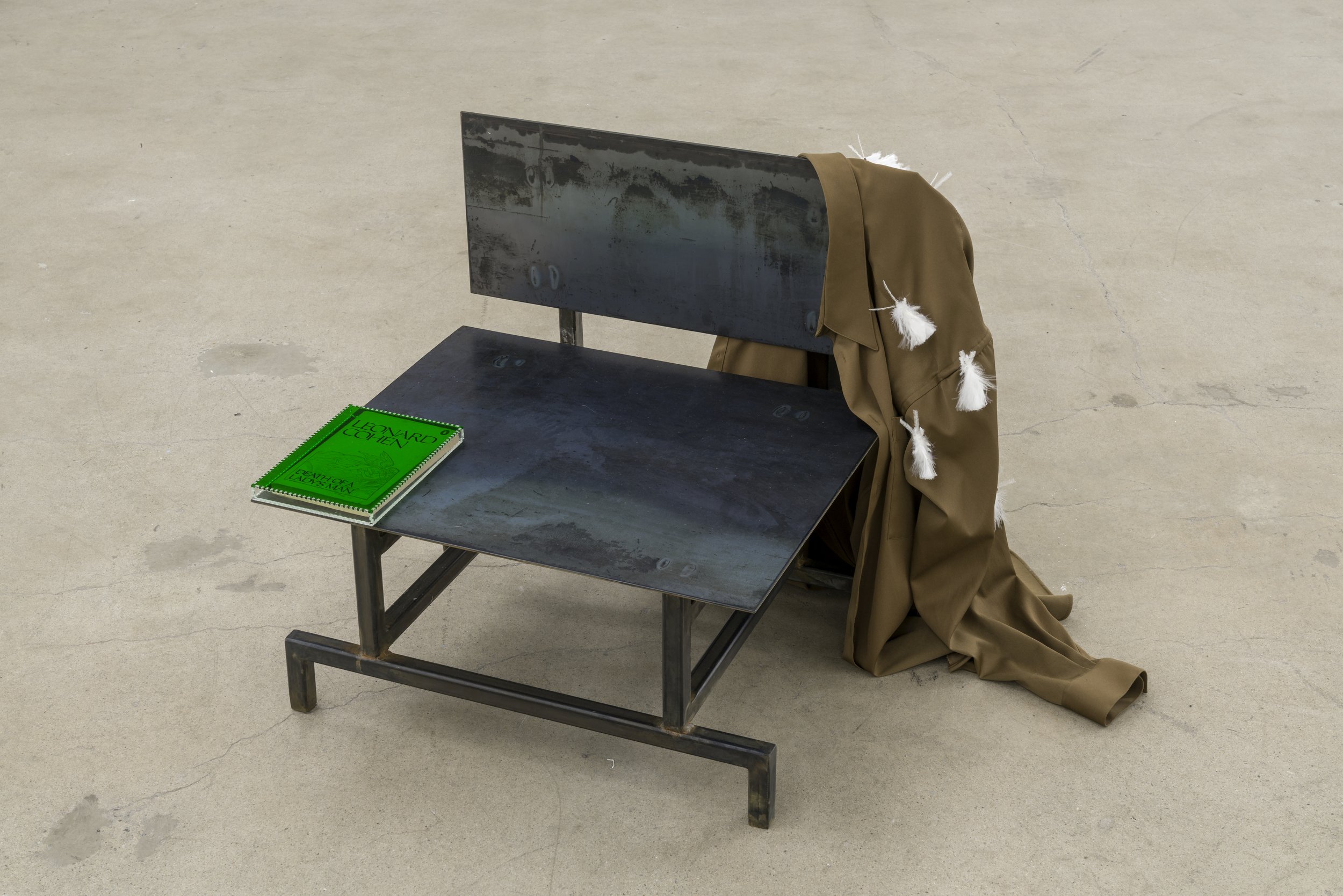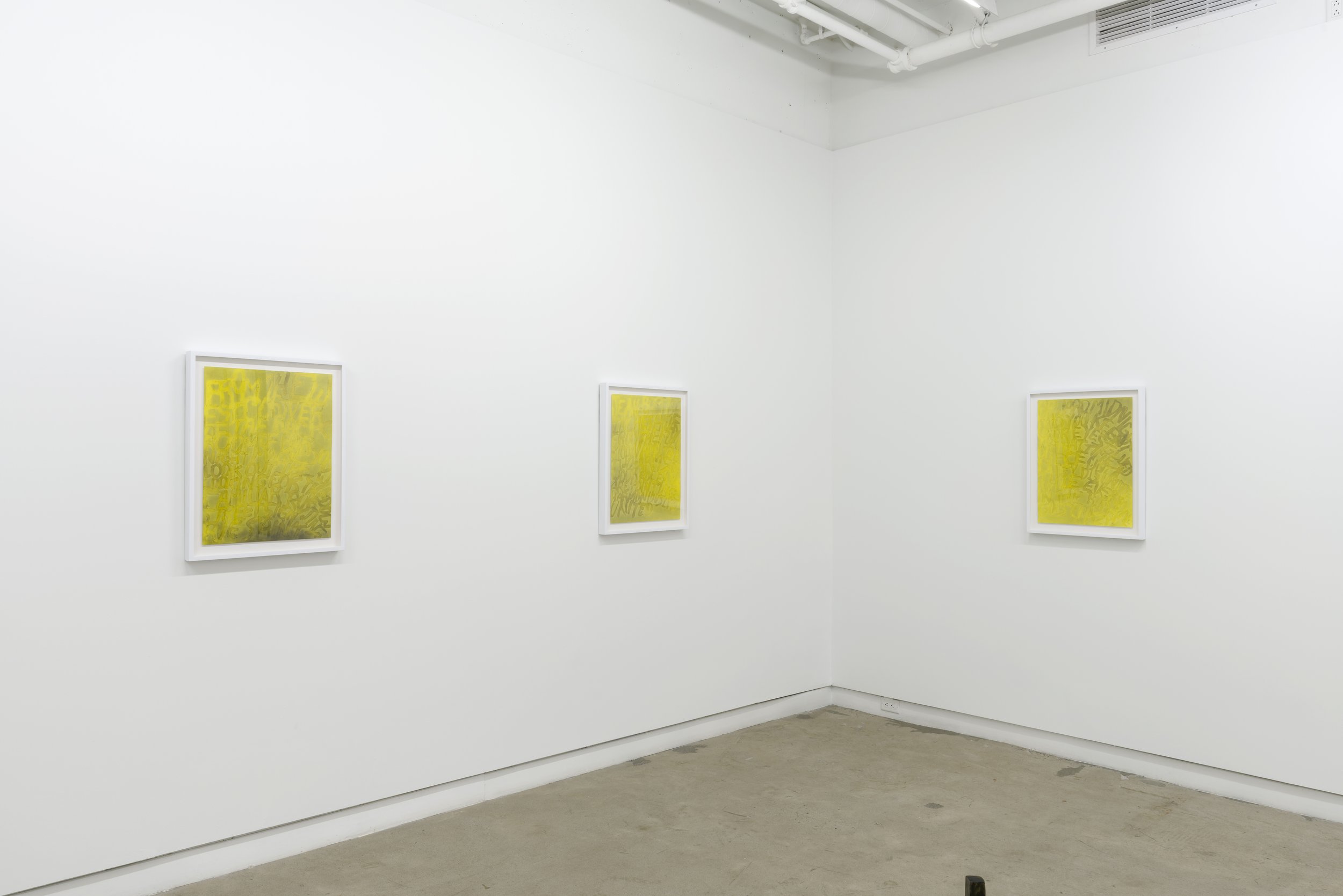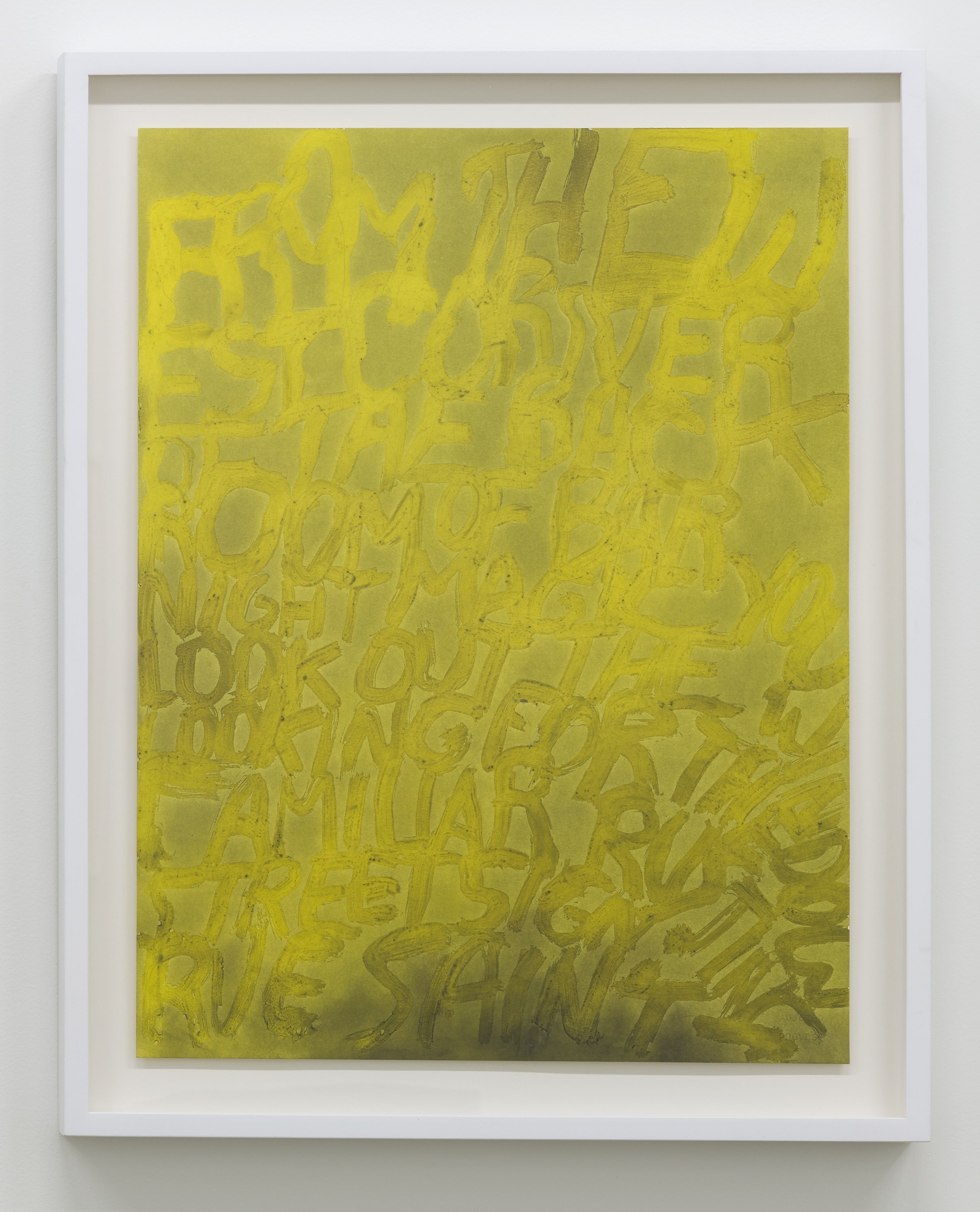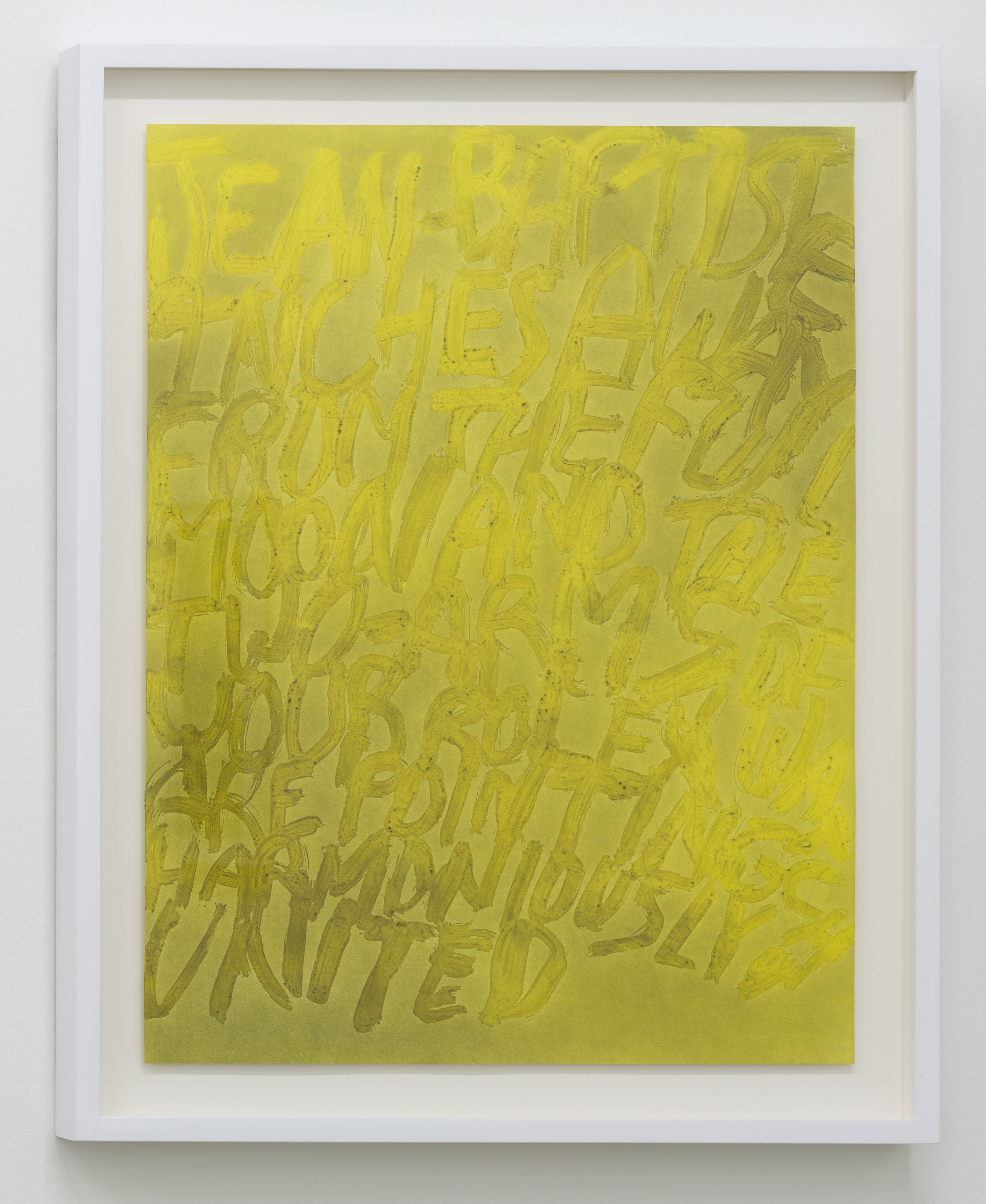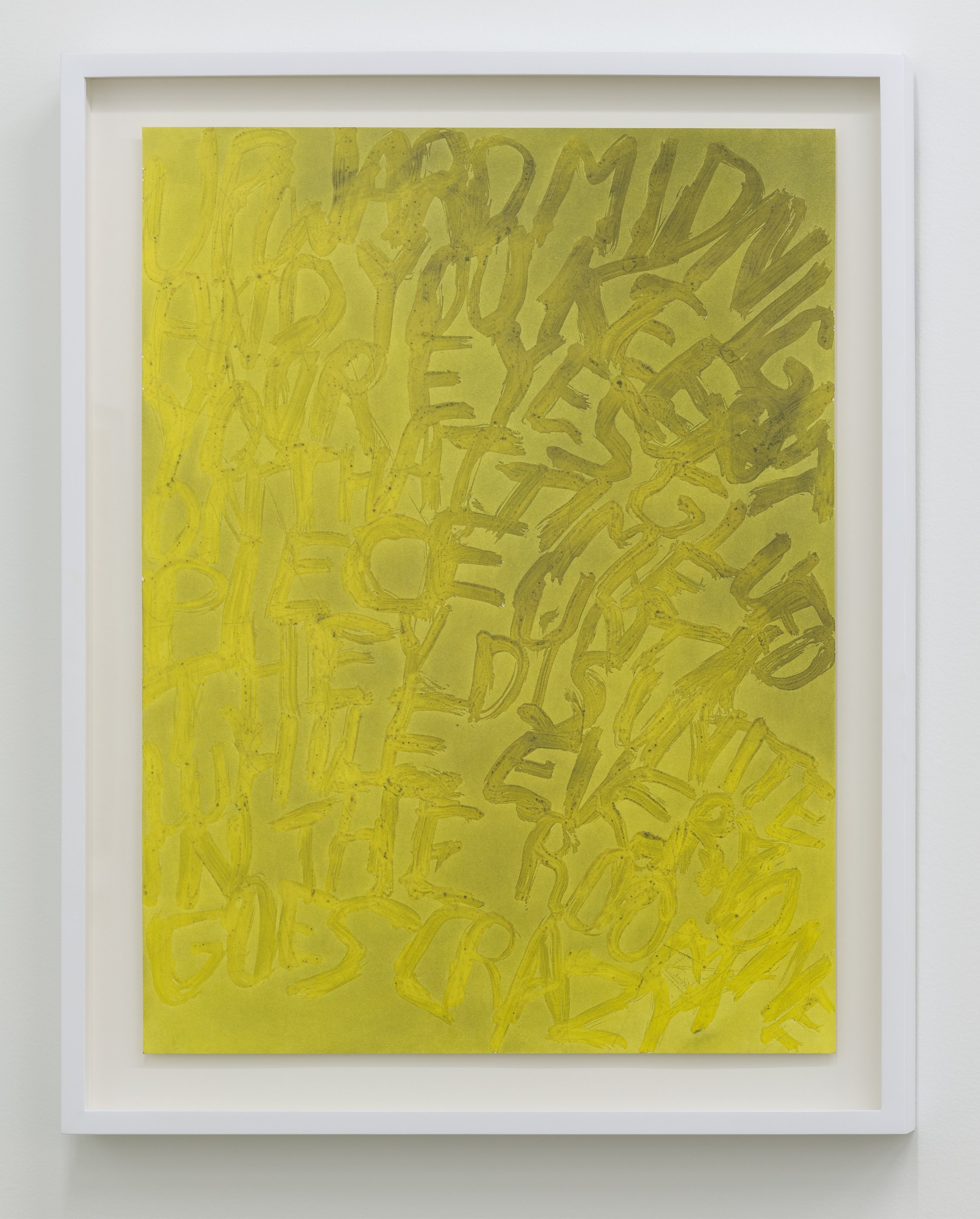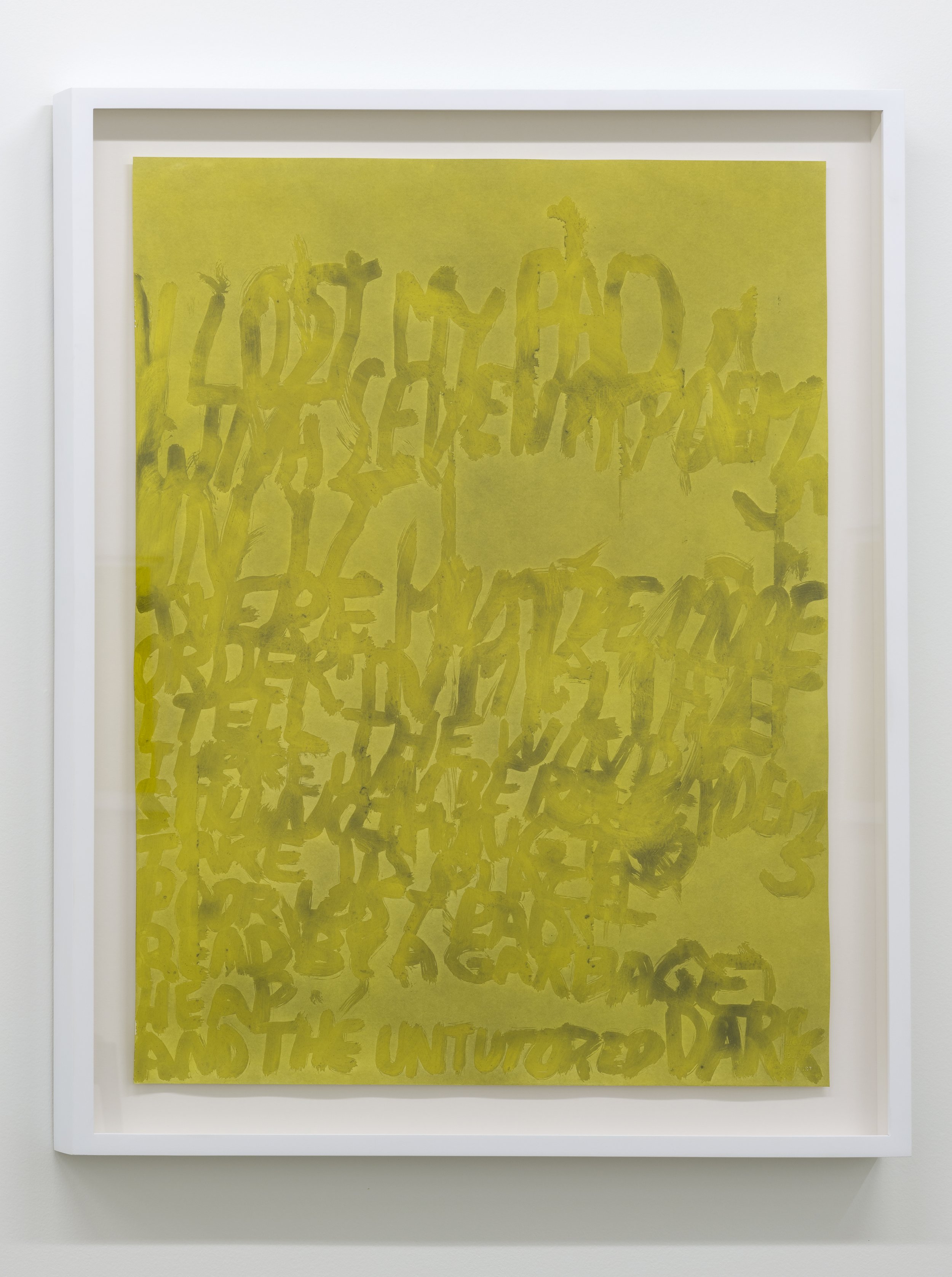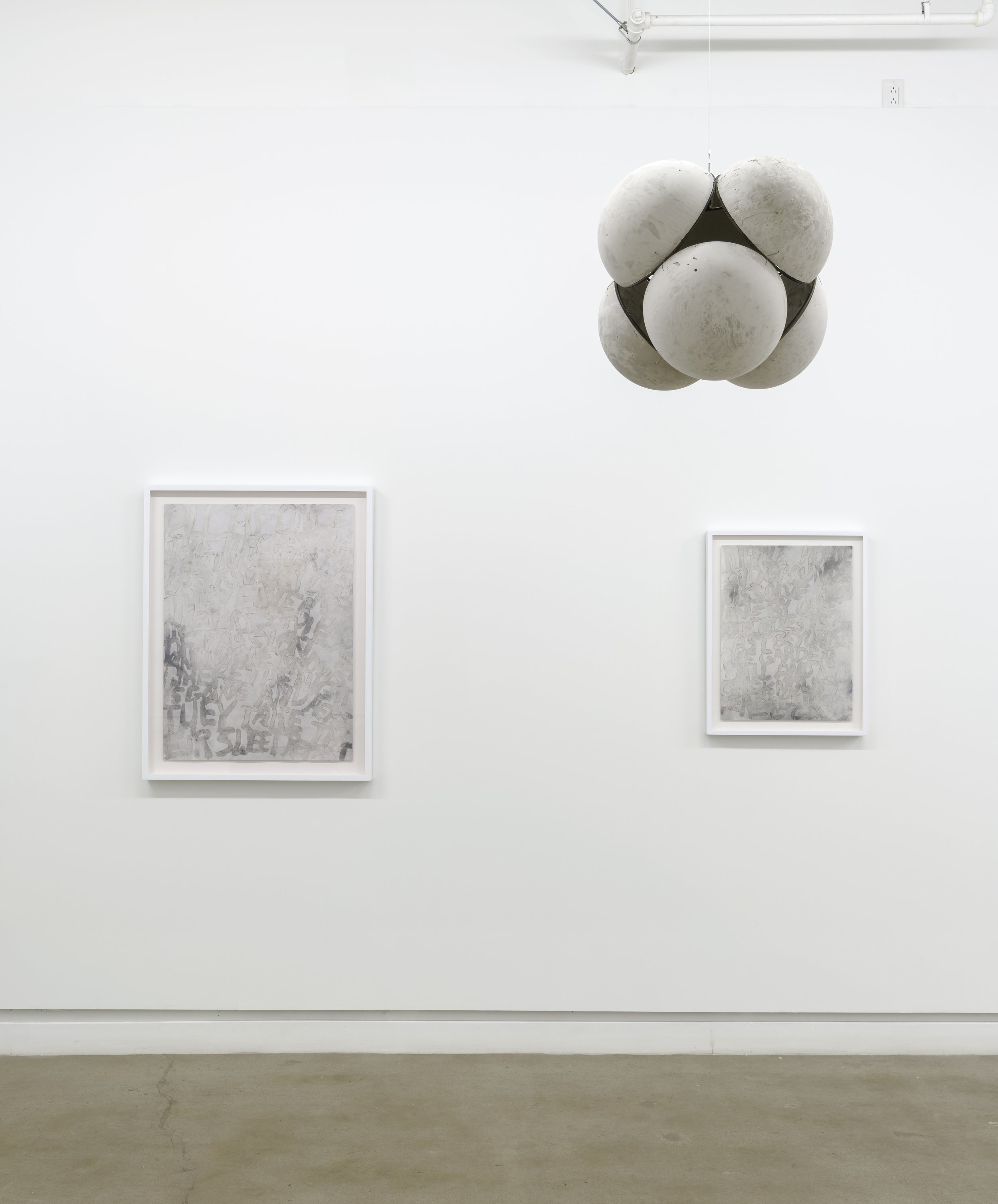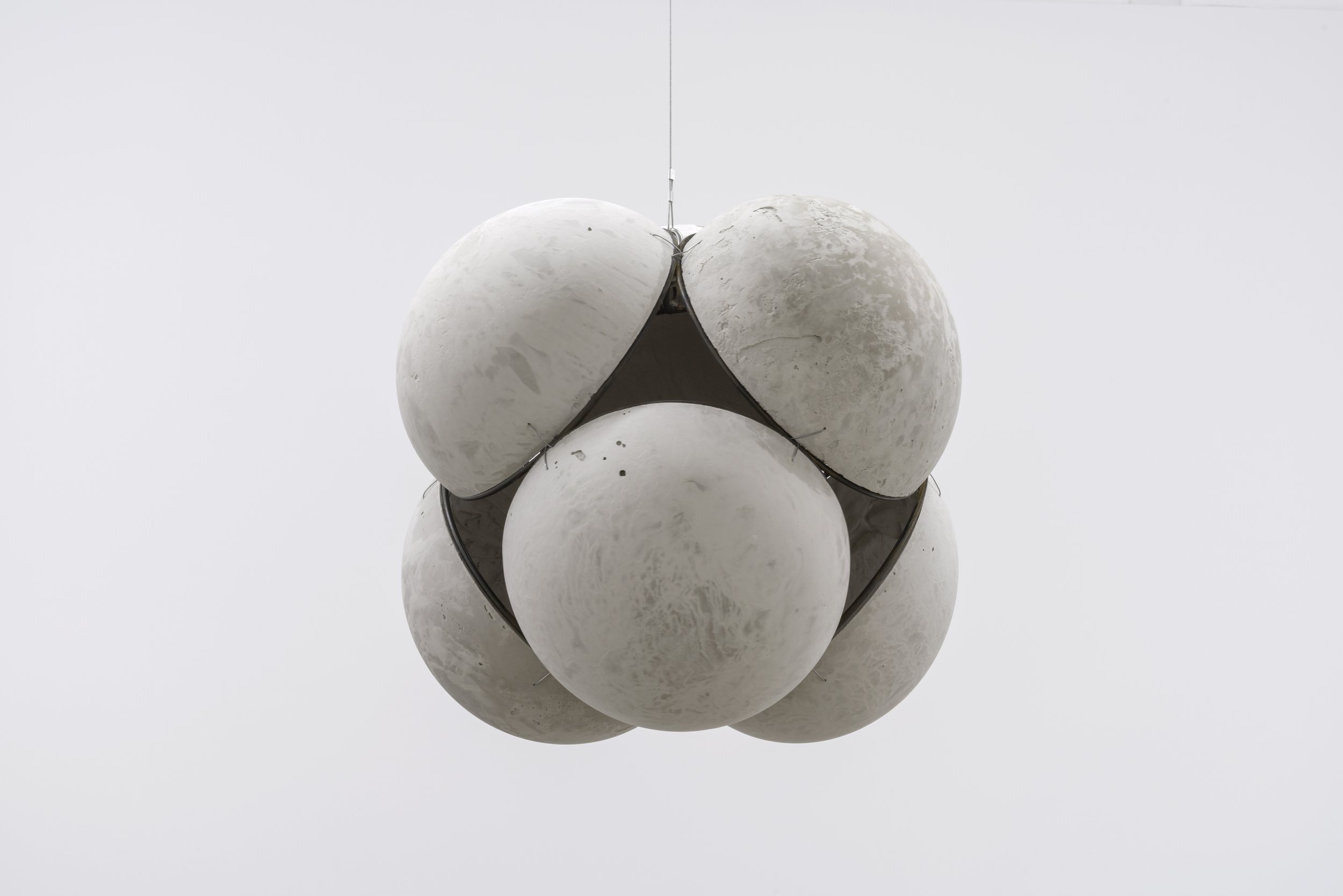Matériellement rien, potentiellement tout
[Materially Nothing, Potentially Everything], 2017
Diagonale, Montreal
This exhibition is a kind of memorial to Nuit Magique, a popular Montreal nightclub that ran from 1976 to 1983. Since few tangible archives of this cult venue still exist, our understanding of it relies on anecdotes from its former owners, and more importantly, on writings from the fringe literary scene. The exhibition project began with the discovery of a book of poems by Spiros Zafiris titled Midnight Magic (1981), where he describes the nightclub as a refuge for poets and signers, among them the legendary Leonard Cohen. Through links made between this book and the poems of Cohen and Henry Moscovitch, it becomes clear that the Nuit Magique scene had an indelible influence on the collective unconscious of the late 1970s. The club’s owner, Bob Di Salvio, was inspired to open a nightclub in the Old Port as a kind of ‘theatre of the real’, and is said to have named it after a lyric in Van Morrison’s song Moondance. In the winter of 1981-82, Cohen co-wrote a libretto with music composed by Lewis Furey. The project had many names: Merry-Go Man, The Hall, and Angel Eyes, before it was finally adapted for the screen in 1985 under the title Night Magic, with Carole Laure in the title role of Judy. The documents that inspired the works on view here offer a somewhat nostalgic view on this period (the post-Olympics Montreal, the disco years, the James Bay project).
Referentiality is at the root of Guillaume Adjutor Provost’s creative process, out of which emerges a kind of conceptual materialism; a conceptual approach that concludes in a very tangible form. This formation of conceptual processes is suggested by the title, ‘Materially nothing, potentially everything,’ a quote by Bob Di Salvio that could be interpreted as a call to abandon our materialist impulses. The exhibition can be seen as one within a series of possible iterations. Suspended concrete globes hang like moons in the gallery. In the centre, a collection of altered smoking pipes rests on a table. The shape of these objects mimics the conjunctio spirituum, a symbolic representation of the union of the masculine and feminine principles in the form of two nude, intertwined angels, which Leonard Cohen borrowed from C. G. Jung’s Psychology and Alchemy (1953), for the cover of his book, Death of a Lady’s Man. When the same artwork was used for the British release of his album, New Skin for the Old Ceremony, the image was censored by adding a fifth angel’s wing to mask the offending parts. The works on paper here are inspired by various lyrical texts by Spiros, Moscovitch, and Cohen, all of which refer to Nuit Magique. The writing is nebulous and serves as a kind of smoke screen where the act of writing prevails over readability. As a whole, the work brings us back to the term ‘scenius”, as coined by Brian Eno, meaning the culture of a time is defined by the ecology of its creators. To question history also means to blur the distinction between the centre and the periphery, between celebrated and forgotten literature.
Translated from the French by Jo-Anne Balcaen
Photo Credits : Guy L'Heureux
Artworks
Night Magic, 1985-2017
Spandex, poster, receipt and vinyl
212 cm x 205 cm
My Poems (H.M.), 2017
Latex and pigment on paper
61 cm x 46 cm
Private collection
From the West Corner (S.Z.), 2017
Latex, graphite and pigment on paper
61 cm x 46 cm (triptych)
Private collection
I Lost my Pad (H.M.), 2017
Latex and pigment on paper
89 cm x 66 cm
Private collection
All at Once (L.C.), 2017
Latex, graphite and pigment on paper
89 cm x 66 cm
61 cm x 46 cm (diptych)
Private collection
Moondance, 2017
Steel, gypsum cement, fiberglass, cable
Edition of 3
61 cm x 61 cm x 61 cm
Private collection
Salon Privé, 2017
Steel, MDF, acrylic, gypsum cement,
collection of customized smoking pipes,
socks, white glue
92 cm x 176 cm x 166 cm
The Poetry, the Text, was Humans, 2017
Steel, acrylic, book, polyester,
feathers, synthetic fibers
60 cm x 61 cm x 80 cm
------------------------------------------------------------------
Matériellement rien, potentiellement tout, 2017
Diagonale, Montréal
L’exposition est un acte de mémoire pour reformuler le club Nuit Magique, lieu de rassemblement du nightlife montréalais entre 1976 et 1983. Le manque d’archives tangibles aura conduit à comprendre ce lieu culte à travers des anecdotes transmises par les anciens propriétaires, mais surtout à travers les écrits d’une frange de la scène littéraire. Le projet a débutée avec la découverte d’un recueil de poèmes de Spiros Zafiris, Midnight Magic (1981), dans lequel il met en scène ce lieu refuge pour poètes et chanteurs, fréquenté notamment par Leonard Cohen. En reliant ce premier document aux textes du poète Henry Moscovitch et de Cohen, il est possible de voir l’influence que le club Nuit Magique a eu sur l’inconscient collectif à la fin de la décennie 1970. Davantage, l’existence même du club est reliée à la chanson Moondance interprétée par Van Morrison, qui inspira à Robert Di Salvio la création d’un lieu de rassemblement dans le Vieux-Port, sorte de théâtre du réel. À l’hiver 1981-82, Cohen collabore à l’écriture d’un libretto pour lequel Lewis Furey fera la musique. Le projet portera divers noms : Merry-Go Man, The Hallou encore Angel Eyes pour être porté à l’écran en 1985 sous le titre Night Magic. Carole Laure y tient le rôle principal de Judy. Le choix des documents desquels émergent les œuvres de l’exposition se rapporte plus ou moins directement à une attention affective envers cette époque (le Montréal post-Olympiques, les années disco, le projet de la Baie-James).
La référentialité est au cœur du processus de création de Guillaume Adjutor Provost, hors celle-ci se manifeste selon ce que l’on pourrait définir comme un matérialisme conceptuel. À savoir que l’approche conceptuelle est supportée par une résolution qui, elle, est bien physique. Davantage, la mise en forme de procédés conceptuels est annoncée par ce titre tiré d’une phrase de Robert Di Salvio : « Materially nothing, potentially everything », que l’on pourrait interpréter comme un appel à se distancer des impératifs matérialistes. L’exposition s’inscrit dès lors comme une itération dans une suite d’itérations possibles. Des suspensions de globes en béton aux aspects lunaires surplombent l’exposition. Au centre, une collection de pipes à fumer altérées est présentée sur une table. La forme de cette dernière reprend le conjunctio spirituum, une représentation symbolique de la réunion des principes masculins et féminins sous la forme de deux anges enlacées, que Leonard Cohen a emprunté au livre Psychology and Alchemy (1953) de C. G. Jung pour la couverture du livre Death of a Lady’s Man et qui fut censurée, par l’ajout d’une cinquième aile, lors de la sortie britannique de l’album New Skin for the Old Ceremony. Les œuvres sur papier tirent leur forme de divers textes lyriques de Spiros, de Moscovitch et de Cohen qui réfèrent au Nuit Magique. L’écriture est nébuleuse et se profile comme un écran de fumée où l’acte d’écrire prévaut sur la lisibilité. L’ensemble traduit, en nous rapportant au terme « scenius » tel que soutenu par Brian Eno, l’idée que la culture d’une époque est définit par une écologie de créateurs. Questionner l’histoire revient aussi à aplanir les distinctions entre centre et périphérie, entre la littérature célébrée et celle négligée.
Crédits photo : Guy L'Heureux
Oeuvres exposées
Night Magic, 1985-2017
Spandex, affiche, facture et vinyle
212 cm x 205 cm
My Poems (H.M.), 2017
Latex et pigment sur papier
61 cm x 46 cm
Collection privée
From the West Corner (S.Z.), 2017
Latex, graphite et pigment sur papier
61 cm x 46 cm (triptyque)
Collection privée
I Lost my Pad (H.M.), 2017
Latex et pigment sur papier
89 cm x 66 cm
Collection privée
All at Once (L.C.), 2017
Latex, graphite et pigment sur papier
89 cm x 66 cm
61 cm x 46 cm (diptyque)
Collection privée
Moondance, 2017
Acier, Ciment de gypse, fibre de verre, câble
Édition de 3
61 cm x 61 cm x 61 cm
Collection privée
Salon privé, 2017
Acier, MDF, acrylique, ciment de gypse,
collection de pipes altérées, bas, colle
92 cm x 176 cm x 166 cm
The poetry, the text, was humans, 2017
Acier, acrylique, livre, polyester,
plumes, fibres synthétiques
60 cm x 61 cm x 80 cm
